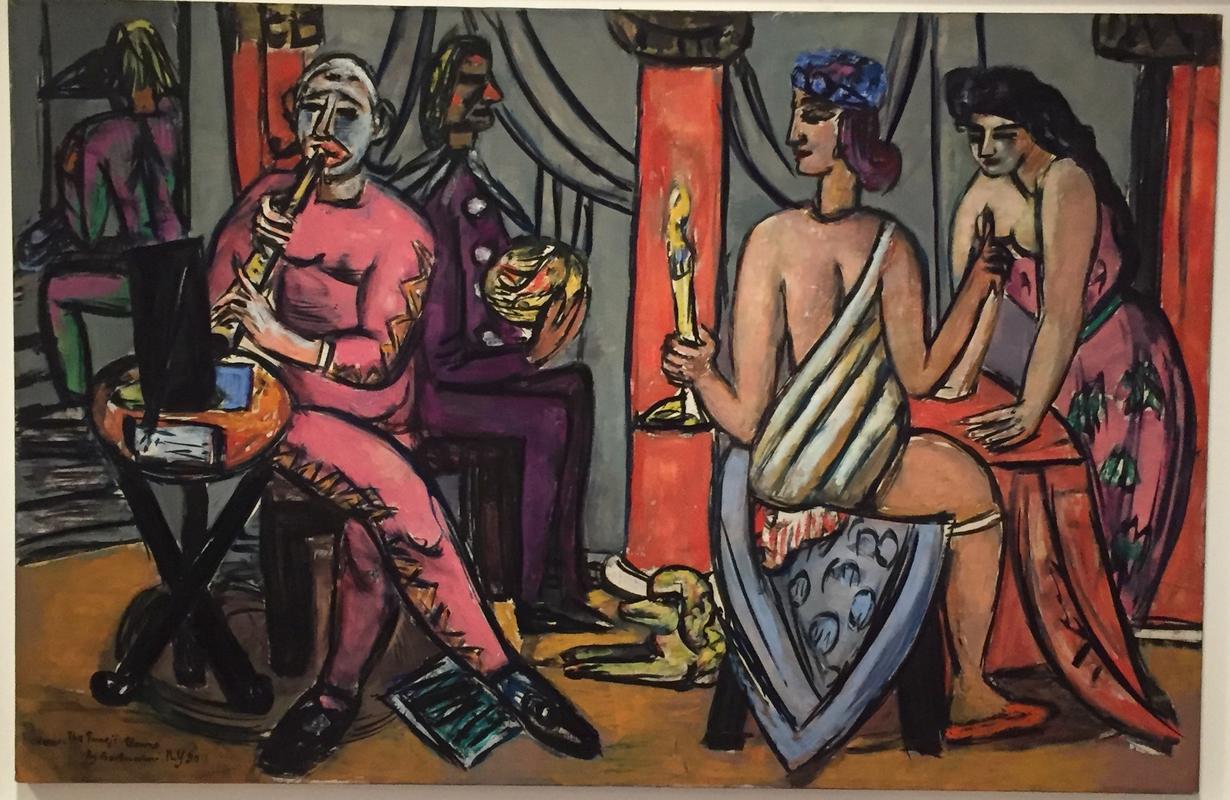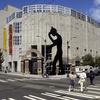More about The Pompeii Clowns
- All
- Info
- Shop

Contributor
IT and friends have been around a lot longer than we would like to think and Max Beckmann’s The Pompeii Clowns, alludes that these awful figures have been a part of society since Ancient Rome.
These clowns, or archimimi in Latin, would perform impressions of the dead at funerals. Morbid. Not only were the deceased up for grabs, these archimimi would also mock family members and mourners. In this painting, we see clowns playing music for two figures, probably making fun of their dead husbands. How sensitive.
But wait, that’s not all, coulrophobians (folks afraid of clowns). There were MANY different types of clowns in Ancient Rome. The Sannio were essentially mimes that performed grimaces with their face as they did not wear masks. How endearing. Next, there is the Stupidus. This clown would mimic the serious actor by using slapstick-style humor and scandals of the day to be the focal point of their jokes. And there were two different types of “lower” clowns known as the Scurra, who acted as jesters and the Moriones who were actually the mentally or physically challenged that the rich kept for amusement. Oh, but don’t worry, according to historians these poor souls were treated well. How nice. There you have it, clowns have been a part of society for centuries and Max Beckmann chose to depict a Pompeii clown scene as one of the last paintings before his death.
Max Beckmann created this painting in the last year of his life, and meant it to symbolize, "the ruthless drama of contemporary living." Having only lived in New York City for one year before his death, it can be assumed that The Pompeii Clowns is a play on the contemporary culture of NYC. Shortly after this painting was finished, Beckmann died of a heart attack walking to The Met to see one of his self-portraits on display.
Beckmann was a bit of a curmudgeon. Having moved to America after ten years in Amsterdam, where he had fled during the second world war, his English was limited and he often relied on his wife to be his translator. Not a fan of the Type-A overly-academic student, Beckmann favored hard-working, boots-to-the-ground students in his classes. My type of guy! Not a fan of abstract painting either, he believed that painting should reflect reality, saying "Get hold of the magic of reality and transfer this reality into painting."
There you have it, clowns have been around for centuries, I’m now scared to death researching clowns, and Max Beckmann saw this painting as a reflection of the current societal standing of New York City.
Sources
- Beckmann, Max. The Pompeii Clowns. 1950. Seattle Art Museum, Seattle. In Seattle Art Museum. Accessed September 7, 2018. The Metropolitan Museum of Art, Marketing, "Max Beckmann In New York," news release, October 21, 2016, The Metropolitan Museum of Art,
- Clown Bluey. "Clown History." Clown Bluey. Accessed September 07, 2018. https://www.clownbluey.co.uk/more-info/clown-history.
- Frankfurt, C.G. "An Exile in the New World." The Economist, November 11, 2011. Accessed September 7, 2018. https://www.economist.com/prospero/2011/11/10/an-exile-in-the-new-world.
- MacDonald, Fiona. "A Surprise History of the Creepy Clown." BBC, October 19, 2016. Accessed September 7, 2018. http://www.bbc.com/culture/story/20161019-a-surprising-history-of-the-b….
- The Art Story Contributors. "Max Beckmann's Life and Legacy." The Art Story. 2018. Accessed September 07, 2018. https://www.theartstory.org/artist-beckmann-max-life-and-legacy.htm.
- The Editors of ARTNews. "‘There Is Something Very Vital Here in America’: Max Beckmann on Teaching in New York, in 1951." ARTNews, October 21, 2016. Accessed September 7, 2018. http://www.artnews.com/2016/10/21/there-is-something-very-vital-here-in…
- The Metropolitan Museum of Art. Marketing. "Max Beckmann In New York." News release, October 21, 2016. The Metropolitan Museum of Art. Accessed September 7, 2018. https://www.metmuseum.org/press/exhibitions/2016/max-beckmann.












